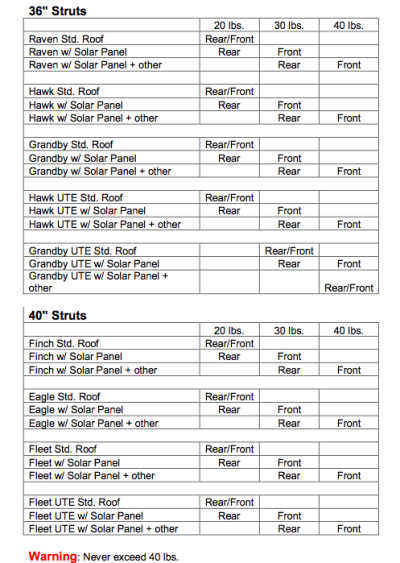DrJ
Senior Member
I originally put in the 40lb Suspa struts. I used them several times and didn't think it was quite enough.
So then I installed the 100lb Suspa struts. Similar price and brackets as above.
They work amazing well. They roof lifts itself without much of any effort. I have 3 solar panels on the roof but they are all flexible panels that probably weigh less than 30 lbs all together.
There is a little extra pulling to put the roof down. But I start pulling down the far side and then the side by the door. The weight of the roof works with you and little effort.
I know there are several reports of danger using more than 40-60lbs, but it works great for me. I've never had it pop up on it's own. It takes just a little push from the door side and up it goes. No effort at all.
So then I installed the 100lb Suspa struts. Similar price and brackets as above.
They work amazing well. They roof lifts itself without much of any effort. I have 3 solar panels on the roof but they are all flexible panels that probably weigh less than 30 lbs all together.
There is a little extra pulling to put the roof down. But I start pulling down the far side and then the side by the door. The weight of the roof works with you and little effort.
I know there are several reports of danger using more than 40-60lbs, but it works great for me. I've never had it pop up on it's own. It takes just a little push from the door side and up it goes. No effort at all.




